timber
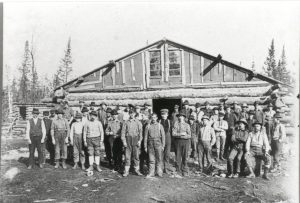
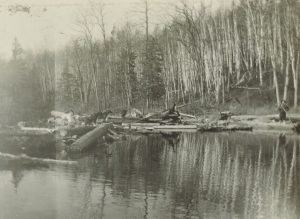 Established as a national forest in 1909, Superior National Forest is located in far northern Minnesota. Big pine timber logging began in the Superior National Forest in the 1890s and continued into the 1920s. Logging was not easy in Superior National Forest, and much of the area remained untouched because of the border lakes region, which presented numerous challenges to the logging companies in accessing and harvesting the stands of timber. In the 1890s, vast extents of the border lakes forests had been stripped away in Michigan and Wisconsin. The early logging was accomplished by means of river driving of logs. That was one of the types of logging that my grandfather was involved in. The logs were cut down,and then floated down the river to the saw mills. The method was a good one, but it could also be dangerous. Many a man was pinched between the logs, and many died. I’m very thankful my grandfather, Allen Luther Spencer was not one of those poor men who lost their lives doing this job. As timber near rivers became depleted, railroad logging became the primary method of getting the wood to the mill. Frozen ground conditions in the winter steered the logging industry to build ice roads providing greater access to timber stands. Logging after 1929 focused more and more on pulp species and the wood products industry.
Established as a national forest in 1909, Superior National Forest is located in far northern Minnesota. Big pine timber logging began in the Superior National Forest in the 1890s and continued into the 1920s. Logging was not easy in Superior National Forest, and much of the area remained untouched because of the border lakes region, which presented numerous challenges to the logging companies in accessing and harvesting the stands of timber. In the 1890s, vast extents of the border lakes forests had been stripped away in Michigan and Wisconsin. The early logging was accomplished by means of river driving of logs. That was one of the types of logging that my grandfather was involved in. The logs were cut down,and then floated down the river to the saw mills. The method was a good one, but it could also be dangerous. Many a man was pinched between the logs, and many died. I’m very thankful my grandfather, Allen Luther Spencer was not one of those poor men who lost their lives doing this job. As timber near rivers became depleted, railroad logging became the primary method of getting the wood to the mill. Frozen ground conditions in the winter steered the logging industry to build ice roads providing greater access to timber stands. Logging after 1929 focused more and more on pulp species and the wood products industry.
Soon, it became evident that the logging industry, while a good a profitable industry, had the potential to deplete the natural resources in the Superior National Forest. In 1921, Arthur Carhart (Forest Landscape Architect) published “Preliminary Prospectus: An Outline Plan for the Recreational Development of the Superior National Forest.” It was released following a survey conducted by Carhart and Forest Guard Soderback in the Boundary Waters region. This publication began to set the framework for the future designation of the BWCAW.
In 1930, Shipstead-Newton-Nolan Act was passed placing restrictions aimed at preserving the wilderness nature of lake and stream shorelines. By 1934, President Franklin D. Roosevelt designated the Quetico-Superior Committee to work with government agencies in the conservation, preservation, and use of northeast Minnesota’s wilderness areas. 1948 brought the Thye-Blatnik Act authorized the federal government to acquire private land holdings within roadless areas, thereby increasing federal acreage within the boundary waters roadless area. In 1949, the passage of Executive Order #10092, established an airspace boundary over the boundary waters roadless area. Highly controversial, this order effectively ended a particular type of recreation in the boundary waters, that of the remote fly-in resort. Resort operators had until 1951 to halt air traffic within 4000 feet of the roadless area.In 1958, The Superior Roadless Areas were renamed the Boundary Waters Canoe Area (BWCA). Conflict over motorized use in the roadless area increased during this time. The passage of the national Wilderness Act in 1964, with special provision regarding the BWCA, allowed some motorized use 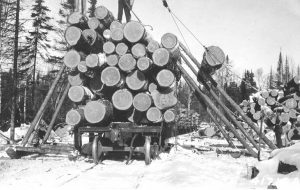
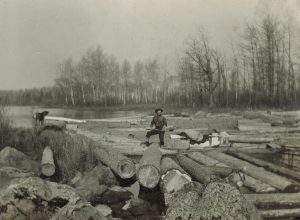 and logging within the Boundary Water’s wilderness boundaries, but by 1978, with the passage of the Boundary Waters Canoe Area Wilderness Act, which was specific to the BWCAW. This legislation eliminated logging and snowmobiling, restricted mining and allowed motorboats on 1/4 of the water area. While logging is necessary, I can’t help but agree with the preservation of the beautiful Superior National Forest.
and logging within the Boundary Water’s wilderness boundaries, but by 1978, with the passage of the Boundary Waters Canoe Area Wilderness Act, which was specific to the BWCAW. This legislation eliminated logging and snowmobiling, restricted mining and allowed motorboats on 1/4 of the water area. While logging is necessary, I can’t help but agree with the preservation of the beautiful Superior National Forest.
 This year has been unique in a horrible sort of way. We are used to California having fires every year when the Santa Ana Winds kick in, bringing scorching heat that dries out the vegetation, making it vulnerable to the smallest spark. Once the fire starts, they are difficult to contain because of the same winds that started the problem in the first place. We hear of these fires every year…sadly it can seem almost routine…even though it shouldn’t. This year is different, however. This year the whole western coast seems to be on fire. The Redwoods are in danger. Washington, Idaho, and Oregon are also going up in smoke.
This year has been unique in a horrible sort of way. We are used to California having fires every year when the Santa Ana Winds kick in, bringing scorching heat that dries out the vegetation, making it vulnerable to the smallest spark. Once the fire starts, they are difficult to contain because of the same winds that started the problem in the first place. We hear of these fires every year…sadly it can seem almost routine…even though it shouldn’t. This year is different, however. This year the whole western coast seems to be on fire. The Redwoods are in danger. Washington, Idaho, and Oregon are also going up in smoke.
The Pacific Northwest has always been the rainforest of the United States, receiving rain approximately 155 days a year. Since Wyoming gets snow much more often than rain, and in recent years, we haven’t received as much of that as we used to, suffice it to say that we don’t even come close to the amount of rain the Pacific Northwest normally gets. This year however, has found the Pacific Northwest oddly void of rainfall. Wyoming, by a stark contrast, has had a very rainy summer. As someone who doesn’t like days 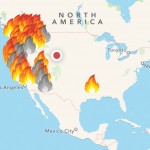 and days of dreary rainfall, that has been a little much for me, but then when I look at the west with its fires, and the rest of the United States largely void of fires, I have to be thankful for the rain. It seems that the only place that is getting very little rain is the west coast.
and days of dreary rainfall, that has been a little much for me, but then when I look at the west with its fires, and the rest of the United States largely void of fires, I have to be thankful for the rain. It seems that the only place that is getting very little rain is the west coast.
I have looked at fire maps many times over the years, but I don’t ever recall the maps having such a lopsided look to them. Nevertheless, that is the look of the current fire map. There is only one significant fire that is not in the west. Our skies are filled with smoke that has rolled in from the west. The mountain is pale behind a curtain of smoky haze, and everything smells burnt…and I’m not even near a fire. I cannot begin to imagine how bad the smoke and the smells are in the thick of the fires. Town after town is being evacuated. Homes, hopes, and dreams are being lost…not to mention lives. It just tears at my heart to think of the devastation to some of the most beautiful rainforest areas of our nation. Places like the Redwoods really could be gone forever, and I can’t begin to imagine how long it will take to bring back the beautiful, moss and fern filled areas of the 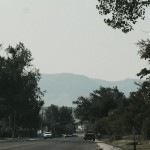 rainforest.
rainforest.
With family and friends all along the west coast, I have been in constant prayer for protection for them, and especially for rain with no lightning. There are some years when fires are so bad, that people can’t wait for summer to end, hoping that the cooler weather will slow down the devastation. I have a feeling that the only thing that will do that will be winter snow or rain, so for their sake, I will agree with their prayers. We have had bad fire years here too, but it never seemed to get quite as bad as it has on the west coast this year. Fires anywhere are awful, but when they are in an area known for it rain, it is simply shocking.
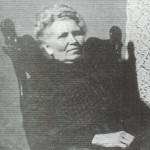 My Great Great Aunt Ida Spencer Brown Nass, married Andrew Alfred Brown on October 1, 1872. They had two sons, Elmer Ellsworth and Andrew Alfred. It is unknown what happened to Ida’s first husband, but she later married Sjur Johannesson Nass, who went by Samuel, and they had two daughters, Ellen and Ethel.
My Great Great Aunt Ida Spencer Brown Nass, married Andrew Alfred Brown on October 1, 1872. They had two sons, Elmer Ellsworth and Andrew Alfred. It is unknown what happened to Ida’s first husband, but she later married Sjur Johannesson Nass, who went by Samuel, and they had two daughters, Ellen and Ethel.
Ida and Andrew’s son Andrew Alfred, who usually went by A.A. Brown, married a woman names Emma Caroline Haessler. Their marriage was filled with love, and blessed with ten children, Gertrude Flora, Alwyn A, Emma Henrietta, John Henry “Johnie”, Bessie, Warren Winston, Elizabeth Ida, Edward Spencer, James Robert, and Fredrick Valden. While their lives were happy, they were not long. Emma passed away on October 31, 1918, leaving Andrew to raise their seven children…a difficult task with small families, but much harder for a man with seven children. Andrew was doing quite well with the task, even though his oldest daughter, Gertrude, who had most likely been a big help, was married on April 20, 1920, leaving him with one less helping hand around the house. Their son Alwyn had preceded his mother in death on June 10, 1918, as had Johnie on September 12, 1905 at 3 years of age, and Bessie on September 10, 1905 at 3 months of age.
On January 29, 1921, tragedy would again strike the family, when Andrew was killed in The Great Olympic Blowdown. The storm, which was one of the worst in Washington state 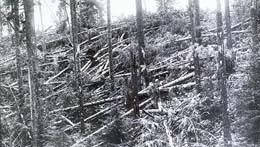 history, came in off the coast at around 8:00 am on January 29, bringing with it, hurricane force winds estimated at 125 to 150 mph. The Forest Service estimated the loss of timber at several billion board feet. The loss of life was one, Andrew A Brown, who was an engineer working at the Anderson-Middleton Lumber Mill in Aberdeen. He was killed instantly when a sudden gust blew down a smokestack pinning him against a broken steam pipe and scalding him to death.
history, came in off the coast at around 8:00 am on January 29, bringing with it, hurricane force winds estimated at 125 to 150 mph. The Forest Service estimated the loss of timber at several billion board feet. The loss of life was one, Andrew A Brown, who was an engineer working at the Anderson-Middleton Lumber Mill in Aberdeen. He was killed instantly when a sudden gust blew down a smokestack pinning him against a broken steam pipe and scalding him to death.
Once again, a grieving Gertrude, who had married Patrick Mint House, stepped in, taking the remaining six children into their home and raising them as their own. Emma was 21 years old by then, so I don’t know if she lived with her sister or not, but the rest of the children ranged in ages from 4 years to 14 years. The littlest ones would most likely not even remember their parents very clearly in the coming years. Their parents hadn’t shared memories of their childhood even with their eldest daughter, Gertrude, so the memories the younger children would have would only be what little bits and pieces she could tell them of her childhood years with their parents. I have to commend Gertrude and Patrick for their heroic and selfless act of taking in her siblings. I can only imagine how hard that must have been for them. In looking through the genealogy records, I can’t find any evidence of Gertrude and Patrick having any children of their own. I don’t know 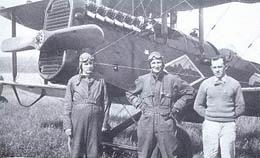 if that was because they were unable to have children or that they had a ready made family. Either way, I find that very sad, because I think they must have been wonderful, loving parents. I imagine that it was an enormous job to take on six children…especially when one is only 23 years old herself. Still, they were family and she loved them. She could not bear to have them go to an orphanage, so she and her husband did what they had to do, and raised her siblings in a happy, loving home…an act of kindness the children never forgot.
if that was because they were unable to have children or that they had a ready made family. Either way, I find that very sad, because I think they must have been wonderful, loving parents. I imagine that it was an enormous job to take on six children…especially when one is only 23 years old herself. Still, they were family and she loved them. She could not bear to have them go to an orphanage, so she and her husband did what they had to do, and raised her siblings in a happy, loving home…an act of kindness the children never forgot.

